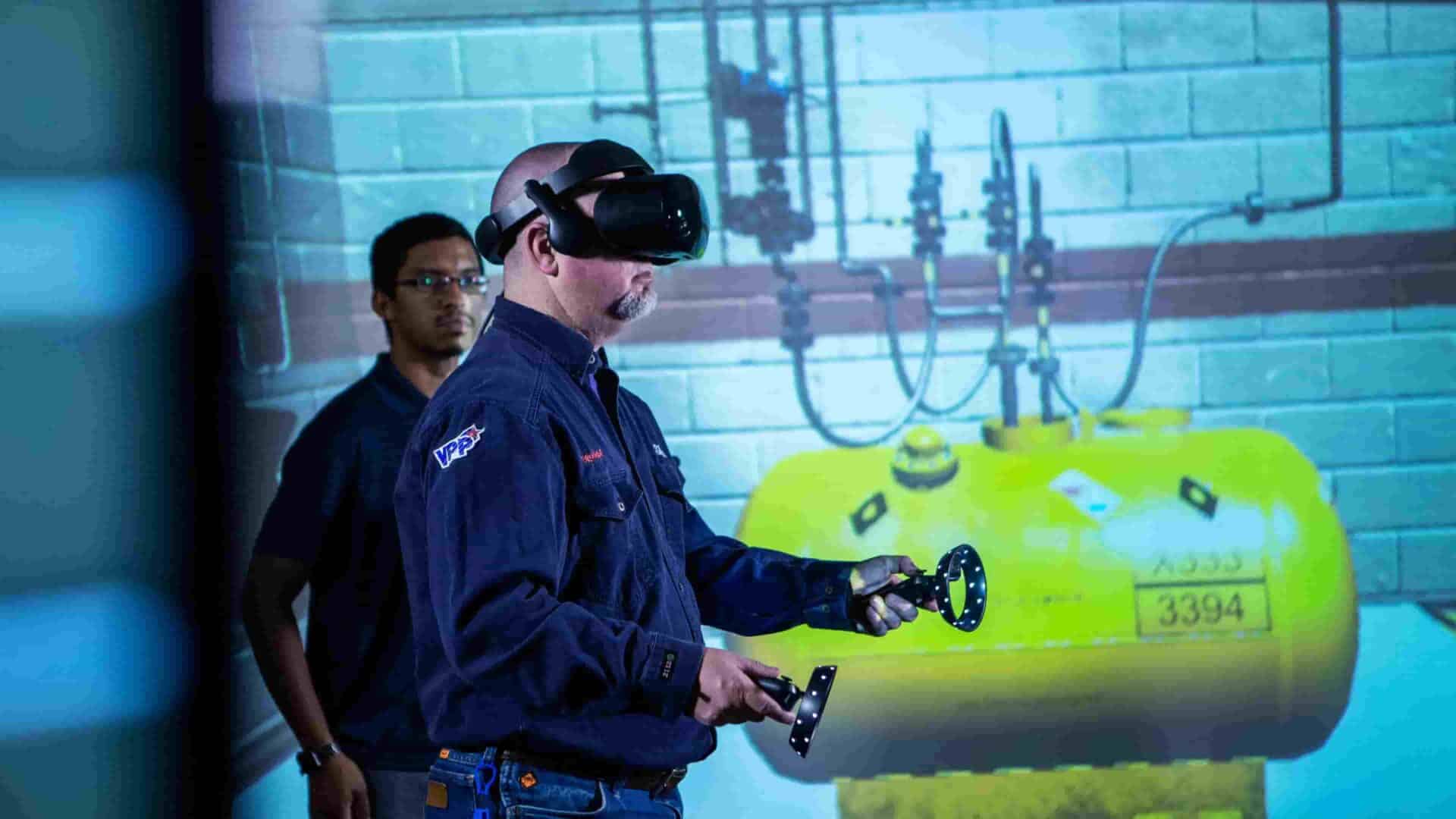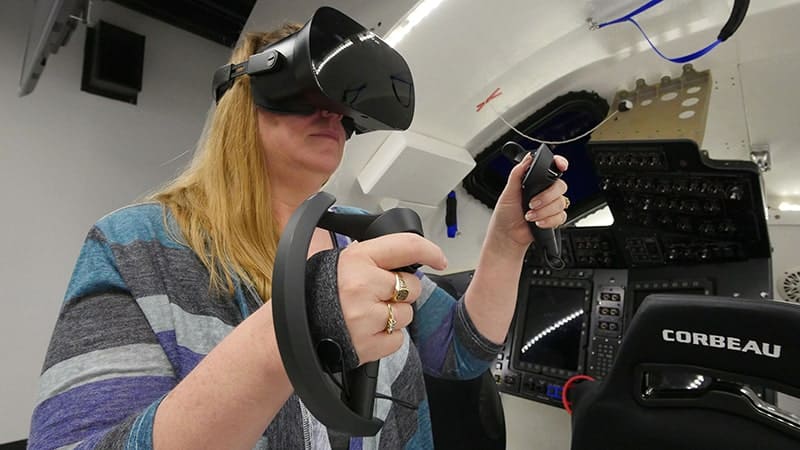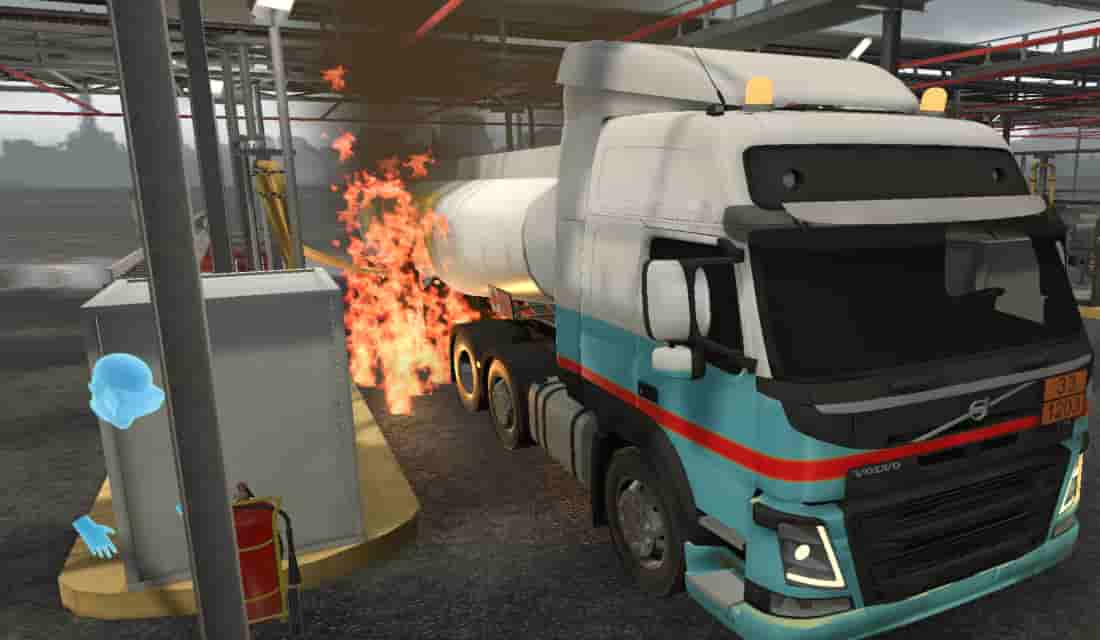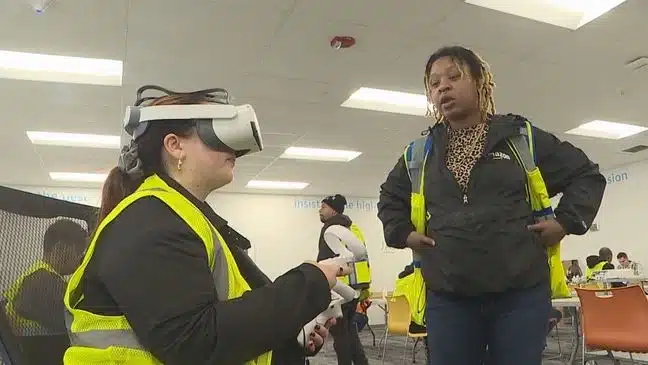Workplace protection needs to be absolutely vital for all businesses with frequent fire risks.
Business organizations globally dedicate substantial monetary resources to train their workers about fire extinguisher training while implementing broader fire safety measures to safeguard people and facilities as well as business operations.
Workplace fires inflict billions in annual losses per year so the National Fire Protection Association (NFPA) states that fire safety training stands as an essential business investment for contemporary organizations.
Research demonstrates that quality fire safety training decreases workplace fire occurrences by a maximum of 40% thus demonstrating its importance in hazardous industrial settings.
Try for Free VR Fire Extinguisher
Our VR Training is available for download on sidequest.
Supporting Devices:
– Meta Quest 2
– Meta Quest 3s
– Meta Quest 3
1. ExxonMobil

As one of the largest oil and gas corporations in the world, ExxonMobil faces high fire risk due to its operations in refineries, drilling rigs, and processing plants. ExxonMobil has implemented advanced fire extinguisher training for employees, combining VR simulations with hands-on practice. This approach allows staff to experience realistic fire scenarios and understand the correct use of extinguishers in emergencies.
Additionally, ExxonMobil collaborates with local fire departments to conduct routine fire drills, ensuring their teams are prepared to respond swiftly in case of fire incidents. The company has also developed a digital fire hazard map to help employees identify potential risks before incidents occur.
2. Boeing

Boeing takes fire safety seriously across its factories and offices. They train staff using hands-on fire drills and clear safety protocols. Teams learn how to use extinguishers properly and respond fast in case of emergencies. Boeing also works with local fire departments to keep their safety game strong.
Fire safety is a core part of Boeing’s workplace culture. With large-scale operations and complex machinery involved, the risk of fire can’t be taken lightly. That’s why Boeing invests in regular training, emergency simulations, and quick-response systems to make sure their teams are always ready.
Their approach shows how consistent, practical training can protect both people and property—even in the most advanced industries.
3. Siemens

Siemens takes a strong stand on fire safety. From their factories to offices, they train employees through hands-on fire drills, emergency response protocols, and equipment handling. Their teams are prepped to act fast and smart in case of a fire. Siemens also works closely with safety experts to keep their processes sharp.
Fire safety is deeply embedded in Siemens’ workplace culture. With tech-heavy environments and advanced systems in place, the risk of fire is real. Siemens handles this by running regular drills, educating employees on best practices, and updating safety protocols constantly. Their proactive approach ensures people and property are always protected.
4. Shell

The worldwide petrochemical and energy corporation Shell allocates its main efforts toward fire safety standards throughout its entire operation network. Every employee at the company gains fire extinguisher training through new employee programs which teach them proper emergency response.
Virtual reality technology enables Shell to generate virtual fire incidents for employees who operate in offshore drilling platforms as well as refineries and chemical plants. Experienced workers benefit from interactive learning resources that teach them about fire behaviors as well as how to conduct evacuations and utilize fire suppression tools in hazardous zones.
The company has established sophisticated fire detection sensors that automatically trigger alarms and fire suppression systems upon detecting a fire. Through early detection system implementation and extensive training measures fire-related losses have substantially decreased.
5. Amazon

Amazon operates large distribution facilities across the globe where fire risks emerge from electrical systems and storage conditions and packaging materials become hazardous. The staff members of Amazon receive thorough training about warehouse-specific fire dangers and fire extinguisher usage through extensive programs established by the company. Real-life fire simulation drills enable employee training that enhance their response accuracy. Through its Internet of Things technology Amazon monitors fire risks which enables it to detect fires earlier while having developed effective response protocols.
The Fire Marshal Program established by Amazon appoints specific staff members who perform regular safety checks and lead emergency actions. The proactive approach has resulted in a 50% improvement of response times for fire emergencies throughout their warehouses.
Why Fire Extinguisher Training is Crucial?
The training of fire extinguishers becomes essential because it enables workers to respond swiftly when fire emergencies occur. Workers who receive proper training can control minor fires thus limiting costly damage to property and the workplace. Organizations focused on fire safety experience lower disruptions and decreased insurance expenses at the same time as their employees feel more confident.
Companies that develop extensive fire safety training protocols decrease their fire damages by 30% according to studies which evaluate their performance versus untrained organizations.
The Role of VR in Modern Fire Safety Training
Multiple organizations have started using virtual reality fire extinguisher training as a method to improve training effectiveness. Employees can use virtual reality simulations for risk-free practice of different fire situations within realistic virtual environments. The engaging training modules both improve knowledge retention and allow workers to build automatic responses for essential fire control actions.
Through its VR Fire Extinguisher Training solution TwinReality assists companies to enhance their fire safety readiness by delivering realistic training experiences. Within virtual training environments employees perform fire extinguishing tasks on electrical faults chemical spills and flammable materials without suffering actual threats. The performance of employees can be monitored by supervisors throughout simulated situations using VR technology to confirm that workers meet fire safety requirements before real-life emergencies occur.
Conclusion
Every workplace needs fire safety as an essential component to secure its operations. ExxonMobil together with Boeing Siemens Shell and Amazon lead the way through their implementation of innovative fire extinguisher training methods that protect both personnel safety as well as risk reduction. Business operations stay uninterrupted together with life conservation when companies invest in preventive fire protection initiatives.
Through their united utilization of VR technology IoT sensors alongside mentorship programs these industry-leading organizations create revolutionary changes in fire safety methods. Employee safety in workplaces continues to improve globally as businesses implement identical defensive approaches to workplace fires.
To learn more about VR Safety Trainings in Refineries, check out this blog: “VR Safety Trainings in Refineries: Helping Reduce Errors.”


